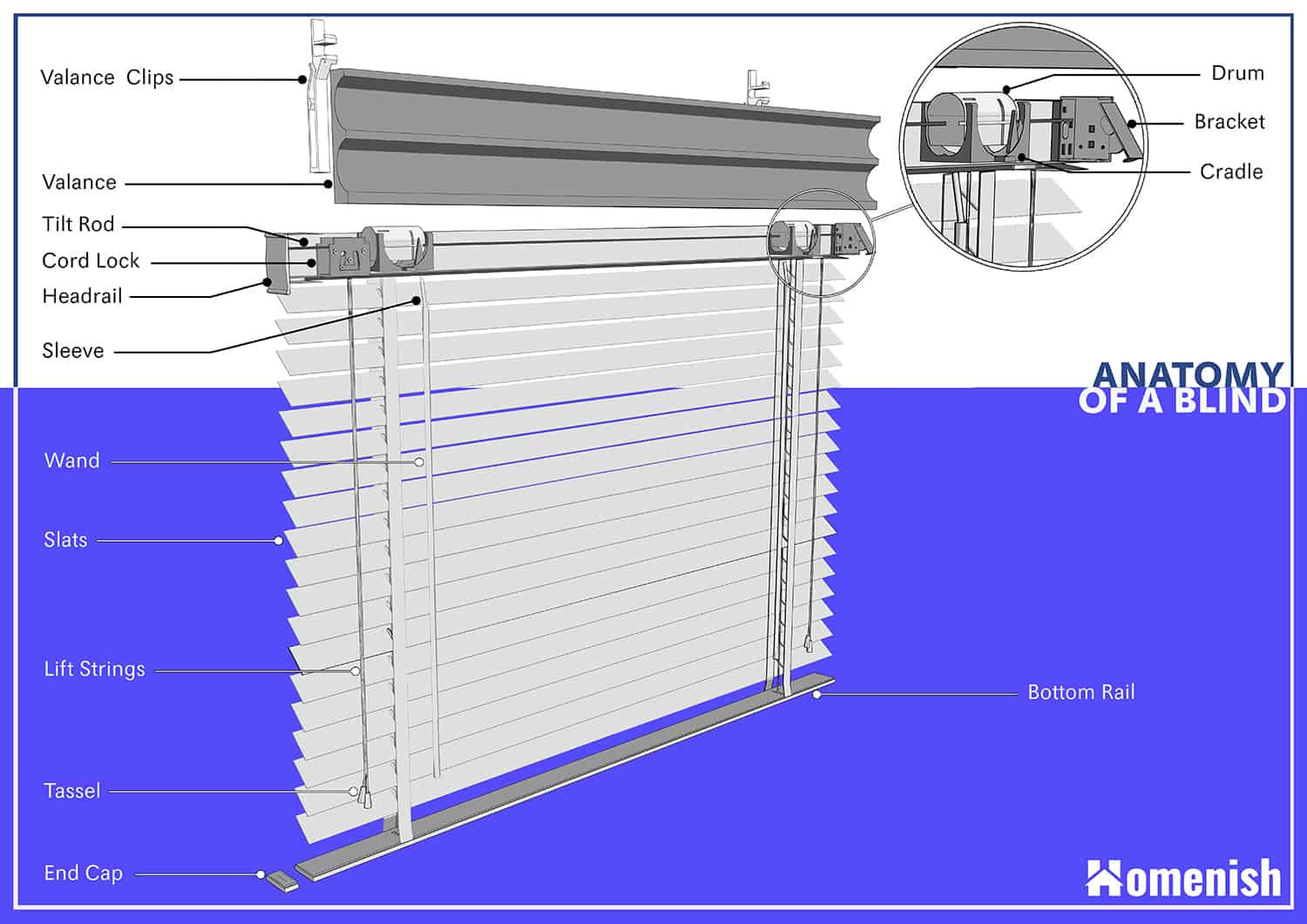Home ImprovementWindowsWindow Treatment
Blinds can prove to be an excellent aesthetic addition to any home or office.
But this is not to say that blinds are only for adding a touch of elegance to your space.
It has practical uses, too, like maintaining a level of privacy in your home.

In this article, well discuss and explain the major parts of a blind illustrated by a custom diagram.
Out in the east, particularly in China, the ancient civilizations tied together bamboos to create roller blinds.
During the 12th century, Venice merchants brought a punch in of window covering from Persia.

Slaves from Persia went with them, and they were the ones who created Venetian blinds.
By the turn of the 18th century, the Venetian blinds had become widespread in Europe.
In 1768, the first patent for Venetian blinds was awarded to an Englishman named Edward Bevan.
This is the forerunner of the blinds we now use today.
Types of Blinds
Venetian blinds arent the onlytype of blinds.
Perhaps the most popular is the so-called vertical blinds, especially for patio doors and smaller windows.
Vertical blinds consist of individual slats running along a track placed at the top of the blind.
It may open from side to side or by parting in the center.
Venetian blinds, meanwhile, are those that have horizontal slats attached with a string of cloth called tapes.
Micro blinds operate similar to Venetian blinds but feature slats smaller in width and about 1-inch thick.
Other types of blinds are pleated shades, roller shades, and Roman shades.
Roller shades are often made from natural or synthetic fabric and can be rolled up and down.
Roman shades, meanwhile, fold into themselves when raised.
It operates similarly to a Venetian blind.
There are two systems employed in blind functions lift system and tilt system.
It works by pulling the cord pull strings to go up through the cord lock.
Theres a latching system in the cord lock which uses the weight of the slats to operate it.
The tilt system, meanwhile, has two types- wand tilt mechanism and cord tilt mechanism.
The cord tilt mechanism, meanwhile, has two pull strings operating and rotating the slats.
you could also see our diagram for the main parts of a blind below.
It is mounted on the wall or ceiling.
Often made of aluminum, it may also be made of other metal types.
Its inside is grooved so that it can hold traversing parts.
There are two main sizes of headrails.
The high-profile headrail is about 2 inches high and 2.25 inches deep when you face the blind.
The low profile variety, meanwhile, is about 1.5 inches high and 2.25 inches deep.
There are also differences in the bottom rail shape; some are rectangular while others are trapezoid.
The bottom buttons have two major styles- the plug button and the tie-off button.
Vanes
Meanwhile, the vanes are the vertical lengths of fabric that hang from the headrail.
Also called slats, blades, or louvers, the vanes may also be made of vinyl.
Fabric vanes are usually manufactured with a sewn-in weight on the bottom.
On the other hand, vinyl vanes come in various colors, styles, and textures.
Control Ends
The control ends are located at both ends of the headrail.
It encloses the string and chain.
The tilt chain, meanwhile, is responsible for tilting the vanes back and forth.
The pull cord or string traverses the vanes back and forth.
Gear Assemblies
The gear assemblies traversing within the headrail are called carriers.
The carriers hold the stem, which is attached to the vane.
Those gears are responsible for the vane rotating back and forth whenever the chain is pulled.
Then theres the stem which is integrated into the carrier.
The stem holds an individual or single vane.
Conclusion
In short, window blinds are highly functional and versatile.
It can make your home or office cooler, especially during the hot summer months.